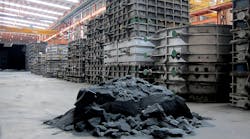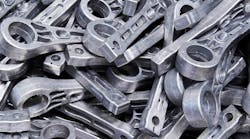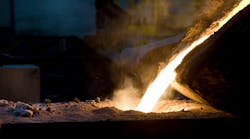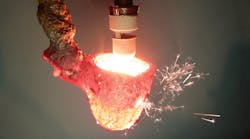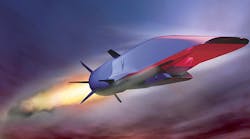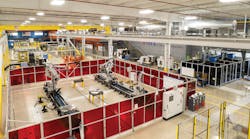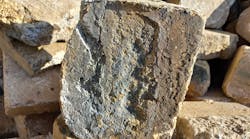National Bronze & Metals has completed a three-year expansion project in Lorain, OH, and the result is a new, $22-million foundry that’s larger than the former operation and capable of propelling the company into new markets for its brass, bronze, and copper-alloy products.
Houston-based National Bronze produces master alloys and variety of cast products and shapes that are supplied to oil-and-gas, aerospace, resistance welding, and various other manufacturing segments. The first foundry in Lorain was established in 1998, and in addition to casting a range of bronze alloys it has been one of the highest-volume foundries for continuous cast alloys in the U.S. The plant also has a niche market fulfilling orders for specifically designed shapes, and it houses National Brass’s Midwest distribution center.
The new foundry was built adjacent to the original operation. The construction and start-up was conducted at a pace that aimed to avoid overcapacity in a slumping market.
The new foundry measures roughly 60,000-ft
2 and features six computer-controlled melting furnaces, including coreless induction and channel melting furnaces. More important, the newer equipment allows National Bronze to produce a greater variety of alloys to specification for aerospace and oil-and-gas markets.
Vertical and horizontal continuous casting is computer controlled, too. National Bronze produces 0.375 in. to 16 in. solids and hollow bars. Its finishing capabilities include straightener presses, engine lathes, automatic saws (capable of tolerances of 0.005 in.), abrasive saws, and plate saws.
The new operation allows National Bronze to produce 1.6-1.8 million lb/month. It plans to produce various heat-treated aerospace alloys, including aluminum bronze and spinodal products; and lead-free alloys for plumbing brass and other applications, in compliance with new federal regulations.
Latest from Materials
Latest from Materials
Melt/Pour
Modeling Aluminum Oxidation
Feb. 27, 2024
Materials
Quiz: Know the Metals!
Aug. 29, 2023
Issues and Ideas
OSHA Cites Schumann for Blast
Aug. 22, 2023
Melt/Pour
Reducing Alloying, Improving Castability
July 17, 2023
Materials
SinterCast CGI Volume Hits a New High
July 11, 2023
Issues and Ideas
LIFT, DoD Renew Co-Op
May 17, 2023

